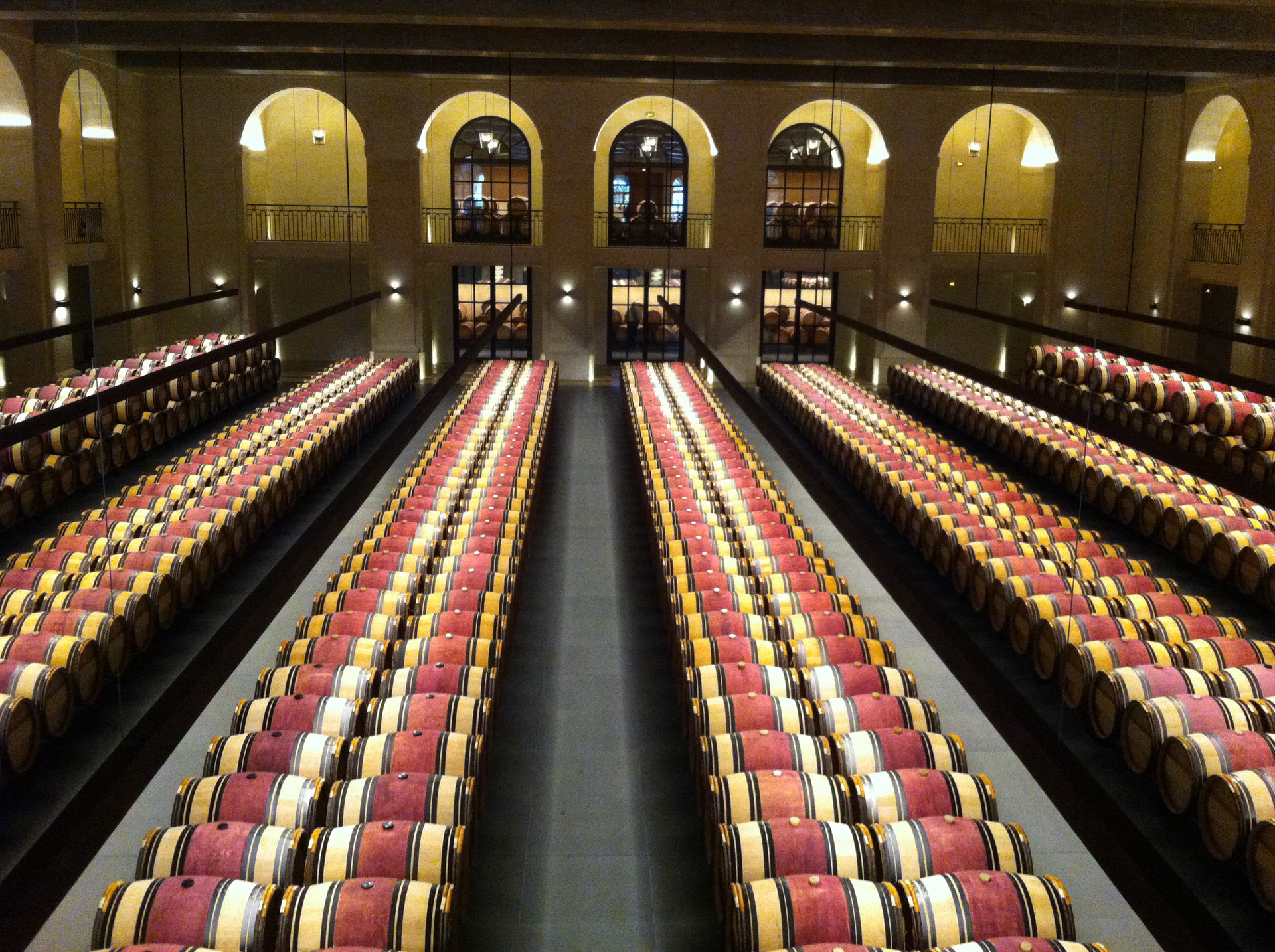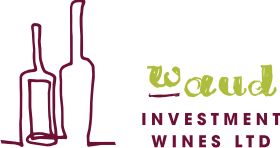
Bordeaux 2020 – headline news from a Liv-ex article
By Liv-ex – April 16 2021.
Article Source: Extended Report – Bordeaux 2020: A sense of déjà vu
Photo: Barrel hall at Chateau Montrose
Some key facts for the 2020 campaign.
- The timing of this year’s En Primeur no longer looks as stifling as it once did, and most critics’ tastings and reports should be concluded by early May.
- These assessments will be vital to the success of the campaign, with release prices predicted to rise, but should not obscure the delicate position of Bordeaux in the wider market.
- Initial indications suggest potential for high quality-wines, but 2020 appears to be a heterogenous vintage.
- High temperatures in the growing season affected volumes, making the 2020 crop smaller than 10-year average.
- With on-going stock retention practices and the possibility of bad frost damage in the region, the number of cases released this year could shrink further.
- The trade should expect a small, fast-paced campaign, likely to happen in late May-June.
Background to the 2020 campaign
Hopes for an improved global situation and the chance to host in-person tastings this year have foundered, dashed on the twin rocks of government ‘roadmaps’ out of lockdown and rising Covid cases in mainland Europe. Once again, much of the fine wine trade will be faced with assessing the latest Bordeaux vintage ‘remotely’ and while demand for fine wine is in far ruder health than it appeared a year ago, there are a unique set of challenges facing the 2020 vintage as it comes to market.
The main question, as it is each year, is how the new vintage will be positioned. Over the past decade, Bordeaux has priced itself based on an inherent perception of vintage quality, as determined by critic scores, rather than the commercial reality of the day-to-day market. Last year’s campaign marked a step away from this logic. Despite major critic scores placing the 2019 as one of the best vintages of the decade, prices were cut by 21% on average versus the 2018s with some labels seeing reductions as high as 31%.
This was a welcome nod to the financial stress the market was experiencing as the pandemic, combined with US tariffs, ongoing Brexit uncertainty and conflicts in Hong Kong, impacted demand. Attractive pricing lured many in the trade and their customers back to En Primeur, and for the first time in years, a healthy secondary market developed, the sign of a successful campaign. Will we see the same this year?
Price increases?
Recent reports seem to suggest an expectation of price increases to come. As one merchant recently quoted in the drinks business said: “Bordeaux seem to be of the opinion that customers got too good a deal in 2019.” Although a (supply) limited campaign in hindsight, the 2019 release proved to be a success for all involved – château, négociant, merchant and collector – precisely because it was a good deal. And when viewed in this way it shows that a taste for Bordeaux futures still very much exists. But push too hard on prices and this enthusiasm can prove fleeting. Buyers scare easily if the pricing pendulum swings too abruptly.
After a year of the pandemic, the outlook is not as uncertain as it once was. US tariffs are currently suspended, the situation in Hong Kong is more settled, and while Brexit has brought added complications for importers, it has not stymied trade entirely. The market for fine wine has in fact gathered steady momentum since last summer. The benchmark indices, the Liv-ex 100 and Liv-ex 1000, have seen gains over ten and seven consecutive months respectively, driving the Liv-ex 1000 to its highest-ever level. March, meanwhile, proved to be the broadest month of trade yet recorded, with over 1,400 distinct wines in play.
Amid all of this, the market for Bordeaux itself is delicately poised. The welcoming of the Year of the Ox in Asia, the suspension of US tariffs and the release of in-bottle reviews for the 2018 vintage, have all provided succour to Bordeaux’s steady performance of late. And yet, Bordeaux’s monthly share trade by value has continued to drift to hit a low of 37.2% at the end of March, and it has sunk further since. The Bordeaux 500 index has also been a slow mover over one year, having risen 8.7%, slightly outperforming the Burgundy 100 (7.8%), but underperforming Champagne, Italy and the Rhône. The region faltered in the 2020 Power 100 rankings too, with five labels falling out.
As this report will make clear, it is likely that this will be another short, sharp and limited campaign. Last year’s was a smaller than average vintage and with (at the time of writing) frost alerts across France, concerns about the 2021 crop could affect the release and pricing strategy for this campaign as the 2017 frosts did on the cusp of the release of the 2016s. If so, this will add to continuing concerns surrounding stock retention in Bordeaux, and the sustainability of the châteaux strategy of withholding wines to release at a later date.
The market for Bordeaux is open and robust and will no doubt welcome a well-judged campaign, but not at any price. The 2019s were able to catch the attention of the market, the Bordelais should ensure that their 2020 wines are able to hold it.
2020 campaign: Back on course?
The UGCB tried to strike a positive tone earlier this year by organising tastings in 10 cities in Europe, Asia and the US for late April. However, as it became clear that holding the UK and US legs would not be possible, they were cancelled. Europe’s vaccination programme has proved slow and trade shows such as Vinexposium and Vinitaly have now cancelled their planned June events. Nonetheless, the UGCB has confirmed (at the time of going to press) that its tastings in Bordeaux, Frankfurt, Brussels and Zurich are going ahead in late April.
The timely arrival of samples is vital to the assessment and pacing of this campaign. Initially, there were concerns that new laws surrounding imports might hamper samples arriving in the UK. However, some major critics have been posting pictures on their social media accounts of samples getting to them, and the UGCB likewise confirmed, on 12th April, the safe UK arrival of its sample kits destined for leading merchants and critics. It is certainly a more organised state of affairs than last year.
Nonetheless, although there are now indications the campaign will unfurl in its usual time slot, those hoping for a leisurely pace to releases may still be disappointed.
Campaign pacing: Rapid fire
Given the speed of recent past campaigns, the likelihood of the small 2020 vintage being sold into July is remote. Another rapid-fire campaign brings both positives and negatives. If there are some encouraging looking scores and opinions before the bulk of releases begin, allied with what look like attractive prices, then the speed and momentum can carry the 2020s home.
But fast campaigns also mean the focus will fall on a small group of releases that stand out most immediately from the pack. In the rough and tumble triage of a day’s releases, some labels will inevitably be left behind. Over the last few campaigns, merchants have already shown themselves to be much pickier, committing only to headline releases and the bankable workhorse labels.
What will prove frustrating, is if scores and prices are attractive, but the châteaux continue to withhold stock. Volumes will be tight as it is, and so the market is already looking at another bijou campaign with limited potential to do business and, importantly, develop the next generation of Bordeaux collectors.
Pricing variables
The potential impact of serious frost damage on the nascent 2021 crop is also an emerging factor here. At the time of writing the extent of the damage is unclear. It may be recalled, however, that bad frosts in 2017 on the eve of the 2016 campaign acted as a spur to estates to reduce stocks and increase their prices. And this was despite many of the classed growths suffering negligible frost damage.
Price increases are always a matter for debate. There has been some limited talk of 5% to even 20% increases on the 2019s. Sterling is somewhat stronger than it was versus the Euro in spring last year, which will soften the impact.
After the excitement of price cuts last year, the Bordelais will need positive views to justify price rises this year. But even positive scores should not be seen as a green light to race back to 2018 pricing levels. Especially when considering how finely balanced market sentiment towards Bordeaux currently is.
Conclusion
As with all En Primeur campaigns, there are a lot of moving parts. In their favour, the Bordelais have an audience looking for distraction (though less so in the UK as lockdown eases and pubs open!), who are currently in the mood for buying fine wine. Last year’s campaign proved that the flame for buying Bordeaux futures is still flickering, while remote tastings and campaigns have become somewhat second nature to the trade and their clients.
Yet since last year’s campaign the market has broadened noticeably, and Bordeaux’s weekly and monthly share of trade has continued to decline. There is also a distinct lack of novelty to the current situation. The 2019 campaign, unfurling at a gallop, ended up pulling off a Buster Keaton-esque escape in challenging circumstances. A year ago, there was a galvanising energy to proceedings as businesses adapted in the face of an evolving situation. It’s doubtful the same feeling is still there, and old cynicisms will be back in play.
Last year in the concluding section of our En Primeur report, it was noted that it would be a “bold move indeed” if châteaux were to release their wines without critical backing, and it would require “eye-catching prices” if they were to do so. In the event, this did happen, with some releases in late May and early June, well ahead of many major critics’ reports which didn’t emerge until mid to late June. But many worked because their price cuts were suitably tempting.
It is hard to imagine the 2020 wines being able to pull off the same trick as the 2019s if they are going to be more expensive. First, opinion on the 2020 vintage at this early stage is unclear and few seem to know what to expect. Second, over-reaching price rises will likely kill off any lingering hopes that last year’s campaign signalled a ‘new direction’ for En Primeur. Fortunately, with key critics indicating at this stage that their reports will be ready for May, the first issue should be neatly resolved, giving all parts of the chain time to consider how to approach the crucial second part.
In order to keep buyers engaged this campaign, the Bordelais cannot afford to put a foot wrong. While market sentiment towards Bordeaux is showing signs of a recovery, it is tentative. There are still a great many wines from vintages that are known quantities – from good to outstanding – available at discounts to their initial release prices. While Sterling’s recent strength gives some room for manoeuvre, the Dollar’s weakness does the opposite. Wines will have to be cleverly and thoughtfully positioned. Even when a better understanding of the vintage’s qualities has been formed, keeping prices within orbit of the much-admired 2019s would seem to be the logical step.
The danger for estates in recent campaigns has been getting lost in the crowd of releases. To ensure the 2020 vintage not lost in an increasingly crowded fine wine market the Bordelais must make it stand out.
